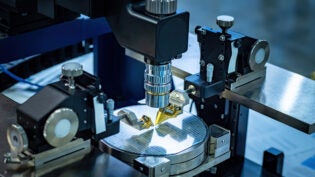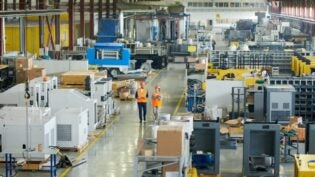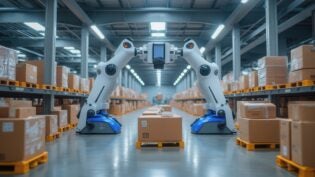3 Key Supply Chain Strategies to Eliminate Risk for Hardware Startups
By: Redshift

Ryan Vinyard—engineering lead for Highway1, one of the first and most sophisticated hardware startup accelerators—loves hackathons.
Vinyard and his team go to a lot of them. He loves what they do for the maker community, loves that they stimulate interest in hardware, and loves that people experience how easy it is to start developing hardware products. After all, at the end of 48 hours, most teams finish with a prototype.
But then what?
“It’s kind of amazing how far you can get in 48 hours,” Vinyard says. “But then you still have a four-year journey ahead of you.”
That’s okay. Whether you have a hackathon prototype or the genesis of a product idea, Vinyard and his team at Highway1 are here to help—ideally by placing you in one of the 10-15 spots available in Highway1’s accelerator program. This year, more than 300 teams applied. The application process itself is no joke, but Highway1 is equally diligent in its selection process.
“We’re looking for the highest-quality hardware teams that we know we can help. . . . It’s only right for us to go through the diligence to give them all the time and consideration each deserves,” he says. “We think like any investor.”
Still, the program at Highway1 is only 16 weeks of drink-from-a-firehose intense education and exposure. Yet these companies make real progress in that time, further developing their prototypes and getting closer to market.
But Vinyard says that building a sustainable and profitable hardware company takes commitment and time. Having a “looks like, works like” prototype is only the beginning of the journey. The key is making sure that the product you’re bringing to market has the potential to scale and grow your business with the right economics. That is why Highway1 also spends time mentoring startups on how to get their products manufactured, how to scale, and how to build a successful company.
Vinyard and his team’s specialty is helping entrepreneurs with limited or no experience in hardware manufacturing reduce or eliminate as many manufacturing and supply-chain risks as possible. One of the key objectives is for teams to end their term with a fundable prototype or to have lowered enough risk to attract outside investors, who can be skittish about hardware companies that experience supply-chain and inventory risk that software startups simply don’t.
But what about entrepreneurs who aren’t ready, willing, or able to go the accelerator route? What are some of these risks, and how should any hardware entrepreneur think about the supply-chain element of the business?
Related Article: Supply Chain Management for Small Business
While Vinyard believes “there’s no cookie-cutter advice,” he shares three elements of his process and supply-chain strategy that he thinks are critical to managing risk and building a robust supply chain.
- Education: The Supply Chain Is Actually a Very Long Chain of Different People Doing Different Things to Make Your One Product. An important part of the Highway1 experience is a 10-day tour of factories in Shenzhen, China, to get up-close-and-personal exposure to a supply chain in action.
Vinyard notes that many entrepreneurs ask, “Can you just take me to the one factory that makes my widget?” His response? “Well, it’s a supply chain. One factory makes the plastics. Another factory makes the rubber. Another factory makes the PCB [printed circuit board]. Another factory makes the package. And guess what? Even the factory that makes the package isn’t putting the stuff in the box.”
Entrepreneurs need to understand their supply-chain components and learn what needs to be considered when setting one up. In other words, there is no “one” place that makes your product.
- Teardowns: If You Love Something, Break It. Break It Into Tiny Pieces, and See How It Works. Especially if it’s your own prototype. Vinyard advocates asking questions and then asking more questions.
“How many different components do you have?” he asks. “Do you think they are all coming from the same factory? What are the critical functions, dimensions, or aspects of each component? Does it have to be incredibly precise because it’s part of a medical device and there’s a calibrated channel in there? Or is that really just an enclosure for your sensors?” Vinyard encourages his teams to optimize every component selection so that they may really discover which elements need to be the highest quality and which ones don’t.
He also encourages entrepreneurs to explore other products. If you see a product you love—even if it isn’t in your field—Vinyard suggests that you tear it apart and try to understand how the feature you love was made.
“Maybe they have a really cool button . . . or light pipe or some cool feature that’s not necessarily their IP [intellectual property] or their secret sauce, but it’s something you can learn from and build on so that it’s implemented into a good experience for your product,” he says.
- Communication: “It’s Not That They Don’t Speak English; It’s That You Don’t Speak Mandarin.” Vinyard believes that one of the most—if not the most—critical components to mitigating risk when setting up a supply chain for your hardware company is communication.
“The hardest part about engineering is not getting the math right,” he says. “It’s getting out there and making sure everyone understands what your plan is.”
Vinyard stresses the importance of making sure the communications with vendors are clear, whether through in-person meetings, proper documentation of CAD releases, or whatever form—as long as it works.
“Putting the time into documentation and communication is key,” Vinyard says. “I can’t tell you how many prototype builds I’ve gotten to the end of and it’s, ‘Hey, we’re going to have that part today, right?’ and the response is, ‘Oh, I thought one more week was okay.’” Although the communication element can feel like overcommunication at times, Vinyard says the war stories he hears never start with, “I really wasted time communicating too much.”
If you’d like to learn more about building a hardware startup, Vinyard and his colleagues just wrote the book about it. Literally. O’Reilly released The Hardware Startup: Building Your Product, Business, and Brand in May.












